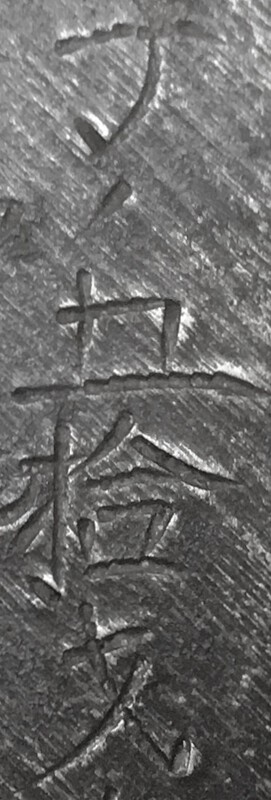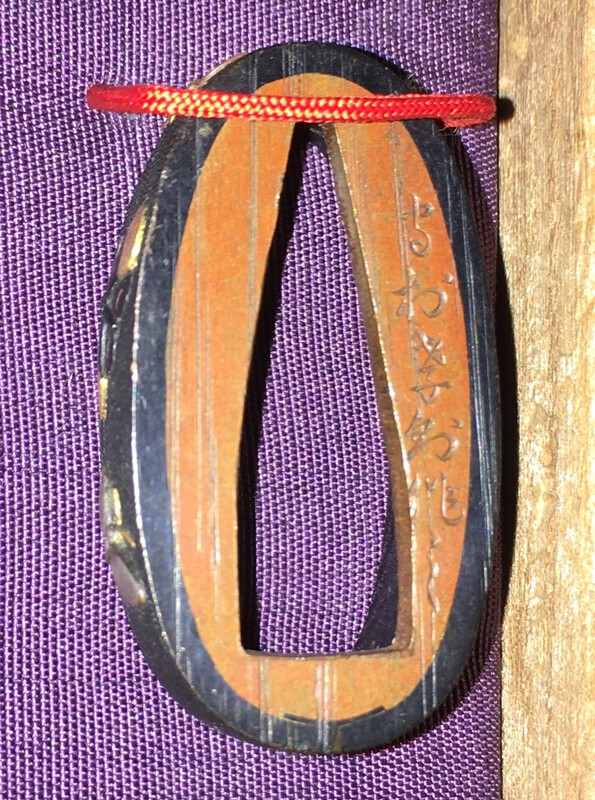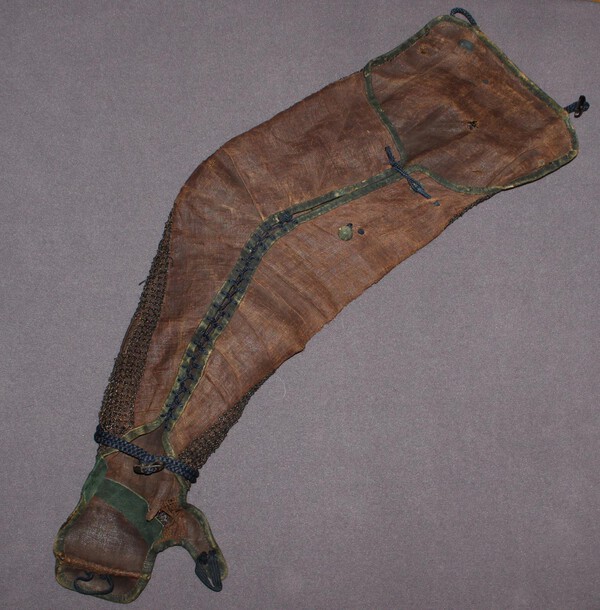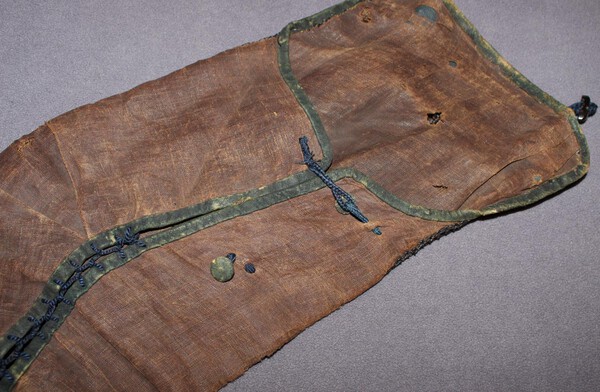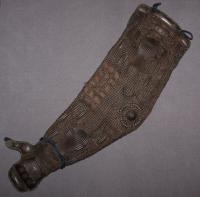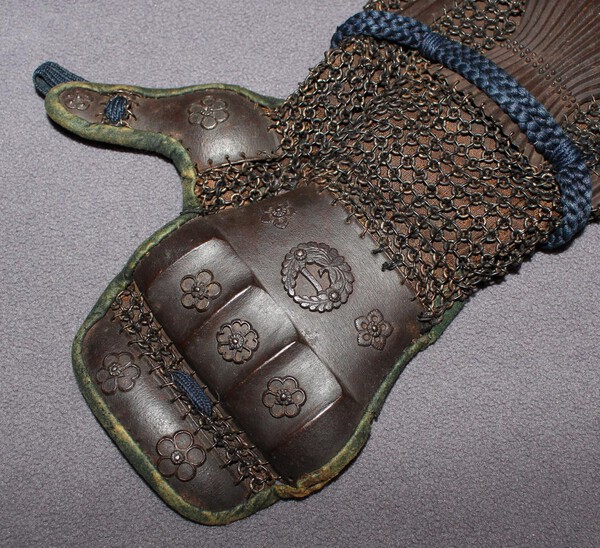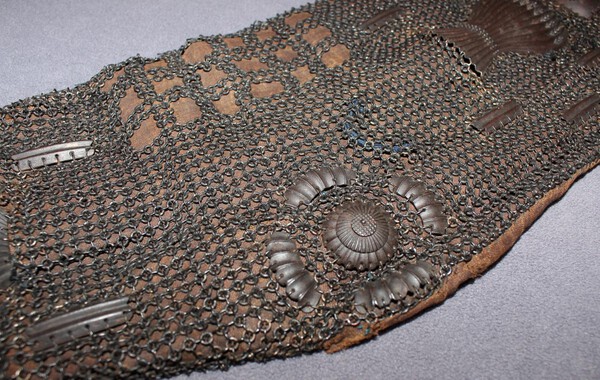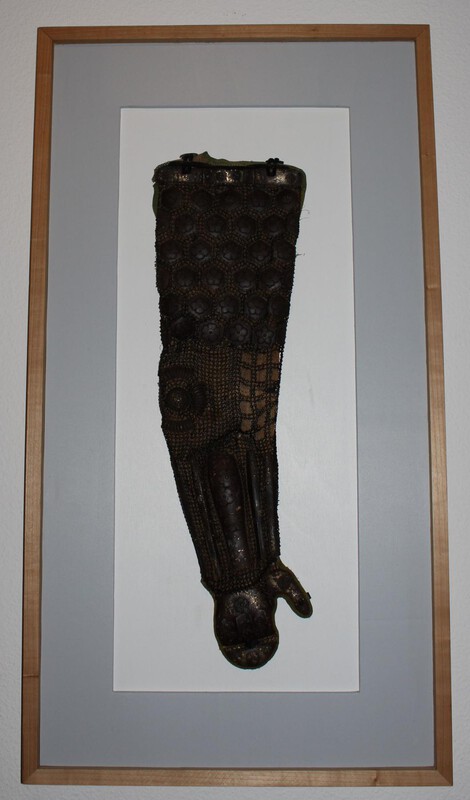
Higo-san
Members-
Posts
717 -
Joined
Content Type
Profiles
Forums
Events
Store
Downloads
Gallery
Everything posted by Higo-san
-
-
I think we are safe regarding the translation „goji sai saku kore“ (五拾才作之) - made at the age of fifty. My best guess regarding the „丁ノ“ part of the inscription would be that this gives us an indication as to the exact year that person was fifty years old.
-
Doing some further research on the first two(?) kanji (see picture below), I accidentally found an old reference source explaining that the old writing for „sai“ is 才. That means that Ray may have hit the correct nail. Regarding the first (two?) kanji, this may be a reference to the so called heavenly stems.
-
Got it now - thanks, John!
-
Thank you very much for your assistance, John and Peter and Ray (who also gets a partial credit )! Just one thing: I can see the gō for five but I cannot see the fifty.
-
Thank you Ian, My best guess was 丁五拾戈 or ーノ五拾戈 - however, that does not make any sense... this could either be a name or some phrase emphasizing the nice season or the good quality of the work. Best, Chris
-
Dear all, I am trying to figure out part of an inscription on a sword that currently resides at an auction house. Maybe someone can help? There comes a Saku Kore afterwards. Many thanks, Chris
-
I am with Grey here - the first one appears to be a nice late Edo / Meiji period tsuba. The material is strange, however - could be silver or maybe it has lost its original patination. It is signed „道暁作“ meaning Michi(?aka?tsuki?) Saku. The signature looks to be engraved and - from what I can see from the pictures - the dragon fish is also quite nice - just take a closer look at its eye. Best, Chris
-
Regarding the subject: This design is nowadays in Japan commonly regarded as the lacing of an armour (and not butterflies). Best, Chris
-
There you go, Steven. Unfortunately, it is almost impossible to get a good shot of the nanako... I bought this one from Dale a couple of years ago and I am still very happy with it (you can see the other side on Dale's picture: http://www.militaria.co.za/nmb/topic/13286-the-fuchikashira-orphanage/). Best, Chris
-
Thank you very much, Morita-san!!!! I will post additional pictures once I am back home . Best, Chris
-
Dear all, this is a tough one to translate! Nevertheless, I am feeling confident that there is someone here who can assist. Thanks a lot, Chris
-
Thank you for the additional info, Klaus! I will also forward your compliments, Stephen !
-
Hi George, this could also be true. My initial reading was Showa „十八“ (= 18) which is 1943. However, the kanji does indeed resemble a nine (九). Best, Chris
-
Thank you all - now that I have a name, I have realized that there is already plenty of info on Munetoshi and the variations in his mei on the board (e.g. http://www.militaria.co.za/nmb/topic/8546-survey-of-gunto-contract-numbers/).Therefore, no further info needed from my side - thank you all! Best, Chris
-
Hi Chris and thank you so much - I think you hit the nail! The nakago is not star stamped - please find attached pictures of the full tang. It is dated July 1943. Best, Chris
-
Dear all, a fellow collector bought a showato at an auction yesterday. He is now eager to translate the mei and asked me for a little assistance. I have already figured out that the blade was made in July 1943 and the first Kanji of the smith‘s name is obviously Mune (宗). However, the online swordsmith database does not contain a smith who signed Mune in combination with that second kanji and who was active in Showa period. Maybe someone can help with the Mei and provide a little background on the smith. Many thanks, Chris
-
Showa-To With Sword Examination By Mike Prill?
Higo-san replied to vajo's topic in Auctions and Online Sales or Sellers
Maybe I have missed something here: the expert opinion says that Mr Prill is a member of the NBTHK EB - however, I cannot find a passage where he states that he is an expert authorized by either the state or the NBTHK. -
Somehow reminds me of Murakami school work; who else sees Hosono Masamori in the way the plants and flowers are done? Best, Chris
-
Even if he is very modest about his skills - one more vote for Uwe!
-
SOLD
-
-
Dear all, this is my last sale before Christmas: a very beautiful russet iron kote with a Family mon. My guess is that this is a work done by a Kaga armorer due to the nicely done little mon. This is a high-grade piece that came from the Ott Collection. I have also attached a pictures that gives you an impression of how a single kote can be displayed (the kote in the frame is not part of this offer). Length: 65 cm Age: Edo period Asking Price: EUR 300.00 (including PayPal) plus shipping Best, Chris
-
Agree with Luis - the second one is worth a Hozon shinsa. The other two tsuba are also nice but the middle one definitely stands out with beautiful details (just take a close look at the eyes). Best, Chris
-
Just a small update: there are lots of items left that did not sell during the auction. Hermann usually gives a 10-20% discount on these: https://www.hermann-historica.de/de/objekte?aid=157&Lstatus=3&Accid=1719&cname=Japan Best, Chris




